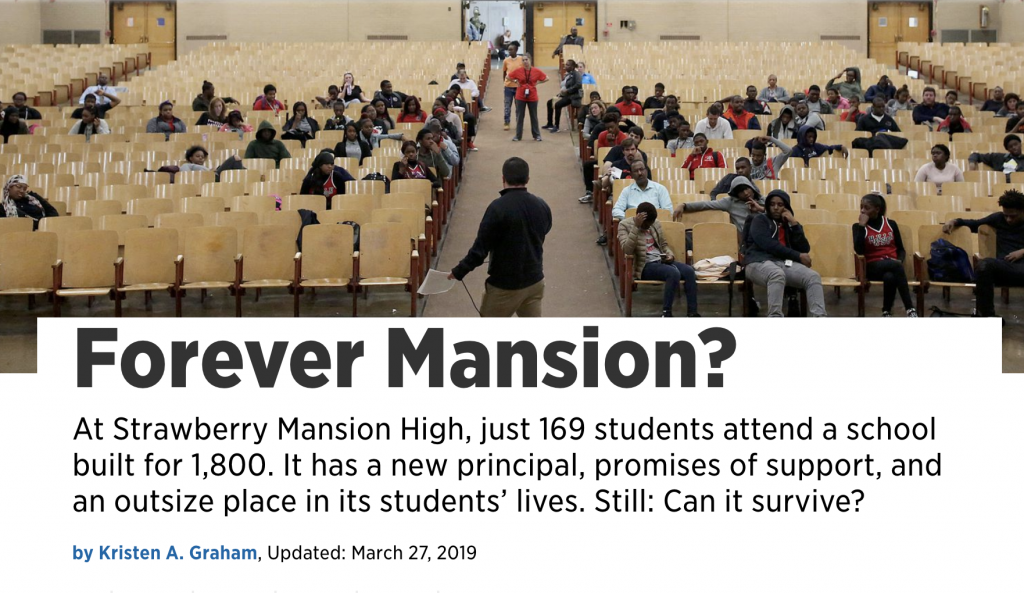Thanks to Kristen Graham and The Inquirer for in-depth reporting about Strawberry Mansion High School that goes beyond the surface and disrupts the typical narrative.
“The morning sky was still dark when Charnel Crockton left the homeless shelter where she lives, swinging the steel-and-glass door open onto a cold December day.
No one spoke to her as she trudged past the day-cares and salons of Germantown Avenue to catch the K bus and then transfer to the 61, which let her off at Ridge and Dauphin, just past the edge of Fairmount Park in North Philadelphia. After a short walk past rowhouses, a Malcolm X mural, and an empty, trash-strewn lot, she reached her destination, the back door of Strawberry Mansion High School, just before 7:30.
Crockton had come north to Philadelphia 18 months earlier, after Hurricane Irma left her family homeless. Her school in Florida, South Lake High, had 26 sports teams, dozens of clubs, and a lot of rules. Mansion, as it’s known, was vastly different when she enrolled.
Built decades ago for 1,800 students, the cavernous structure that occupies an entire city block at 31st Street and Ridge Avenue had become a shell of what it once was. Five years after Diane Sawyer showcased it on TV as one of the nation’s “most dangerous” schools, Mansion was on life support.
The five-floor brick-and-concrete building in the neighborhood of the same name — highest in the city for homicides and shootings, according to police data — is attached to a shuttered elementary school. At Mansion’s peak, all five floors were bustling; now, it uses parts of just three. When the student body gathers in the auditorium or gym, the space feels too large.
Last spring, Philadelphia School District officials presented plans to phase out the comprehensive high school. After a community outcry, they agreed to use this school year as a planning period, pausing ninth-grade admissions while they figured out how to attract more students in 2019, and vowed to give the resources and time needed to do so.
The reasons behind Mansion’s decline run deeper than one neighborhood, one district, even one city. And its plight is emblematic of a larger phenomenon: how traditional urban public schools often struggle to survive in an increasingly competitive educational marketplace.”

